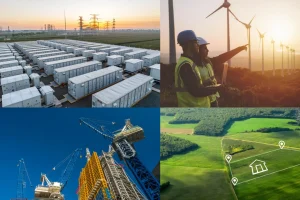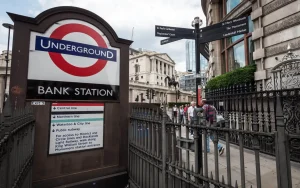What is Land Referencing?
Share
Land referencing is the process of identifying who owns land, who occupies it and what rights or restrictions are attached to it.
It brings together records from the Land Registry local authorities and site surveys to build a full picture of every interest tied to a piece of land. The information is used to support projects that may involve land acquisition such as road schemes, new transport routes or regeneration work particularly where compulsory purchase is required.

Referencers use mapping tools like GIS to match legal interests to specific boundaries but it is the legal records that confirm what is accurate.
They also identify everyone who needs to be consulted including owners, tenants or anyone with a legal right over the land. When done properly land referencing helps to avoid disputes, ensures the right people are notified and keeps the project in line with legal requirements from day one.
An Example of Land Referencing

One of the best examples of land referencing in action is the Mallard Pass Solar Farm project in Essendine. Spanning 852 hectares and set to generate around 350 megawatts of clean energy the scheme is large enough to require a Development Consent Order as a Nationally Significant Infrastructure Project.
Ardent was brought in by Windel Energy to manage the land referencing. Our land referencing team was tasked with identifying every party with an interest in the land including freeholders, leaseholders rights holders, statutory undertakers and more. In total we identified 161 interests including Network Rail, who held an interest in the scheme due to proposed cable routes running beneath a local viaduct.
We issued land interest questionnaires followed up with all parties and managed consultation notices throughout the process.
We also prepared key documents including the Book of Reference land plans, statutory mail-outs and a full schedule of negotiations.
The DCO application was submitted in November 2022 and granted development consent in July 2024.
If you are working on a similar scheme and need land referencing support read the full Mallard Pass case study to see how we can help.
Why is Land Referencing Crucial?
Clear land referencing is the foundation of any successful infrastructure or regeneration scheme. Without it, ownership disputes, missed interests and legal delays can derail progress.
By identifying who owns what and where, it gives project teams the certainty they need to plan, consult and acquire land lawfully. Every interest is recorded, every boundary mapped, every stakeholder accounted for.
It also supports compliance with statutory processes under the Planning Act 2008 and Compulsory Purchase Act 1965 – ensuring projects meet legal requirements and stand up to scrutiny.
Good land referencing keeps things moving. It reduces risk, avoids challenge, and ensures fair treatment for everyone involved.
Which Sectors Could Benefit Most from Land Referencing?
Land referencing plays a vital role across a range of sectors and underpins progress in infrastructure regeneration utilities and more.
When done properly it gives project teams clarity from the outset helping to avoid delays, manage risk and stay compliant with legal requirements.
Here are 3 sectors that benefit a lot from Land Referencing:

Urban Development and Local Authorities
For councils and developers accurate land referencing supports regeneration by clearly identifying ownership boundaries and legal rights.
This helps secure land efficiently, manage compensation fairly and reduce objections during planning. With GIS mapping and detailed property data approvals move faster and stakeholder engagement is more targeted especially in built-up or high-density areas.
Transport and Infrastructure
Rail road and airport schemes depend on precise land referencing to map out every interest affected by development.
For example HS2 Phase One required around 70 square kilometres of land and involved thousands of property interests. Strong referencing allowed the project team to serve compulsory purchase notices accurately and resolve potential disputes before construction began.
Renewable Energy and Utilities
Energy and utility providers use land referencing to guide decisions around site selection, land access and stakeholder engagement.
Wind farms, solar parks, hydrogen sites and water infrastructure all require accurate records to map boundaries, assess environmental risks and connect with affected landowners.
Land referencing adds value across every phase of a project whether it is planning a new rail link building homes or upgrading utility networks. The clearer your understanding of land interests the smoother your delivery.
Partner With Our Land Referencing Experts For Your Next Project
Our team works across the UK, delivering accurate, detailed land referencing for some of the most complex infrastructure and regeneration schemes.
Built on Experience, Backed by Technology
We use GIS mapping, CAD, mobile technology, and our custom-built database, Atlas, to collect, manage and interpret land data efficiently. From early-stage enquiry right through to Order submission, we support your project at every step.
A Complete Service from Start to Finish
We carry out diligent investigation into land ownership and legal interests, support optioneering, handle requests for information and questionnaires, and manage complex title records.
Our team prepares the statutory documents needed for DCOs and CPOs , including Books of Reference, Land Plans and Order Plans; and we’re experienced in securing land access for surveys and issuing notices such as Notices to Treat and General Vesting Declarations.
We also manage landowner engagement, identify affected assets, and prepare tailored plans for land and works agreements. All notices and site postings are tracked and recorded using mobile tools, giving you a clear audit trail.
We Also Specialise in:
- Application of a robust land referencing methodology to demonstrate diligent/reasonable enquiry ahead of statutory consultation and Order submission
- Land ownership data management
- Land referencing expert witnesses at hearings, examinations or public inquiries
- Digital land referencing tools and applications
- Digital data management
Trained Specialists, Trusted Delivery
Every member of our team is trained in-house through the Ardent Land Referencing Qualification, giving you confidence that the work will meet both statutory requirements and industry best practice.
Proven Track Record on Major Projects

We’ve delivered land referencing on flagship projects like the Triton Knoll Electrical System, M42 Junction 6, Norfolk Vanguard, Portishead Branch Line, Net Zero Teesside, East West Rail and the A66 Trans-Pennine upgrade.
We were also the first company to successfully deliver a DCO — and we’ve led the way ever since.
Our Experts Are Trained In-House and Trusted Across the UK
To ensure the highest quality of service, our Land Referencers undertake an industry-leading in-house training programme called the Ardent Land Referencing Qualification (ALRQ).
Through this we have been able to produce highly skilled land referencing specialists, trained in utilising the latest digital technologies.
We have also designed a unique approach to project delivery by offering four integrated core services that help us to provide clients with a comprehensive guide to the CPO process, uniquely enabling us to take their projects from inception to completion.
More Than Just Land Referencing
We don’t just deliver land referencing services in isolation. Our work is backed by three other core services: Compulsory Purchase and Consents, Compensation, and Atlas & Geospatial Insights — giving you one joined-up service from start to finish.
To talk to us about your project, contact us by, click here and fill in our contact form and we’ll be in touch with you.


















